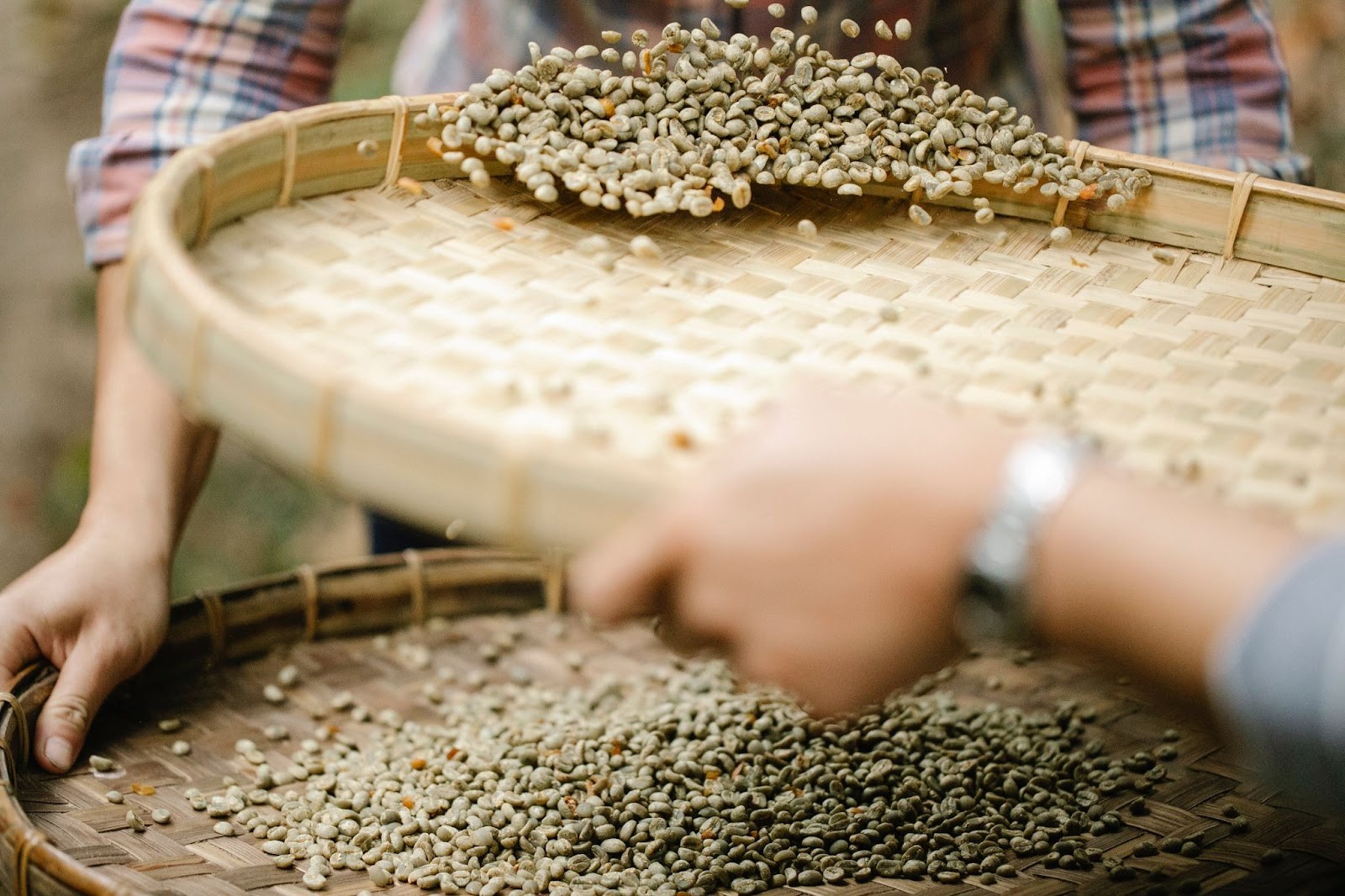Wet Process Coffee, The Journey From Harvest to Green Bean – Wet Process Coffee usually determines the flavor, aroma, and overall quality of the final brew. Wet process processing can be divided into 2, wet process – dry hulling and wet process- wet hulling.
Wet Process Coffee technique is famous for producing coffee beans with clean, fresh and natural flavors. Then, how does coffee actually travel to produce fresh green beans? Here is information about the wet coffee processing method to produce delicious green beans.
Cherry Bean Harvesting Process
A delicious cup of coffee comes from a long journey of processing cherry beans by farmers. The harvesting process can vary, some go through a selective picking process by choosing only the ripe ones. But there is also strip picking, aka pulling out everything. Determining the harvesting technique is generally determined by the amount of labor, land, and the ratio of ripe fruit.
In the selective picking technique, farmers cannot harvest the coffee fruit at the same time, because the cherry bean does not ripen at the same time. Only the red and yellow fruits are harvested, while the green fruits wait until they turn red.
Harvesting is done selectively by hand to select cherries that are truly ripe. The best cherries are harvested and collected to maintain the quality of the coffee.
The harvest period in each region in Indonesia differs depending on the location. For example, in southern Indonesia (Lampung, Java, Bali), coffee is harvested around May-October. However, the peak is in July to August. Meanwhile, in northern Indonesia, namely Sulawesi and Aceh, coffee is generally harvested at the end of the year.
The picked cherries will continue the sorting process to distinguish perfectly ripe coffee by eye and gentle touch. This process must be done carefully, separating ripe, unripe, and damaged cherries and then proceeding to the washing process.
Cherry Bean Grain Stripping Process
The peeling stage uses machine assistance, followed by the washing process. The machine will peel off the outer skin of the fruit and some of the flesh. This leaves the green bean and the horny skin that covers it, as well as the mucus from the grains.
In the pulping stage, the coffee beans are cleaned of the soft fruit on the outside. In addition, this process is the basis for flavor development in later coffee beans. Carefully remove the skin and pulp until only mucilage remains. The mucilage contains sugars and compounds that affect the potential complexity of the coffee flavor during the fermentation process.
Green Bean Fermentation Process
Once the cherries are separated from the skin and pulp, they then proceed to the fermentation process. The sugar in the mucilage will be broken down during the soaking process, due to the reaction of bacteria in the water. This stage also makes the mucilage dissolve with the water.
The fermentation stage serves to dissolve the mucus from the coffee beans, so that it does not cause a particular flavor. Instead, excessive fermentation can cause the coffee to become over-fermented.
If the fermentation is too long, the acidity comes through but the flavor is complex. So, expert processors always closely monitor the length of the process to create the perfect flavor.
After the fermentation process is complete, the coffee beans are ready to proceed to the washing process. The coffee beans undergo a cleaning process to rinse and remove any mucus that is still attached.
Coffee Bean Washing
The washing process aims to remove the slime or sticky layer that coats the coffee beans. Removing the mucus must be done carefully to avoid excessive fermentation. Because, it will potentially produce an unpleasant taste and tend to be too sour.
The washing stage can use a variety of methods, interestingly each method will affect the final coffee profile.
Fermentation Tank Using Water Flow
The coffee beans are washed in the fermentation tank using running water. This method ensures a thorough washing process. Thus, minimizing the risk of re-absorption of unwanted chemical compounds from the fermentation process.
Agitation Washing
The coffee beans are washed in a tank of water and then stirred with the help of a machine. The gentle stirring will cause the mucus from the beans to break away from the parchment, leaving the beans cleaner. This method requires 3 washing cycles, starting from filling the water tank, stirring the beans, and emptying the water from the tank. Coffee beans that have been thoroughly washed until the mucus is gone are then dried.
Drying Process
Before becoming green beans that are ready for distribution, they need to pass the drying stage. The aim is to reduce the water content in the green beans so that they can be stored longer.
High moisture content in the beans is prone to mold growth and degradation. Proper drying can ensure a longer green bean life and retain its flavor without mold formation. In addition, high moisture content in coffee beans can affect their selling value.
The traditional method usually uses the help of sunlight in the drying process. Wet beans are placed on a mat and dried directly under natural sunlight. This traditional process allows for slow and gradual drying, allowing unique flavors to develop during the process.
In addition to traditional drying, there are mechanical dryers. These modern innovations offer a controlled drying environment that guarantees uniformity in the drying process, providing a reliable and efficient solution.
These dryers use hot air or other heat sources to rapidly reduce the moisture content of coffee beans. Although mechanical drying is more efficient, it requires precise control to prevent over-drying and maintain bean quality.
Once the green beans are shelled, sorted, and graded, they are ready to begin their final journey to the consumer. Green beans are usually packed in durable burlap bags.
These precious coffee beans are a symbol of the hard work, dedication and passion that coffee producers put into their craft. The journey ends at a delicious taste, awaiting the skillful touch of the coffee roaster. (*)
Read the most complete article about coffee at KopiKita and find out everything you need to know about the world of coffee, from the types of beans to how to brew them!









